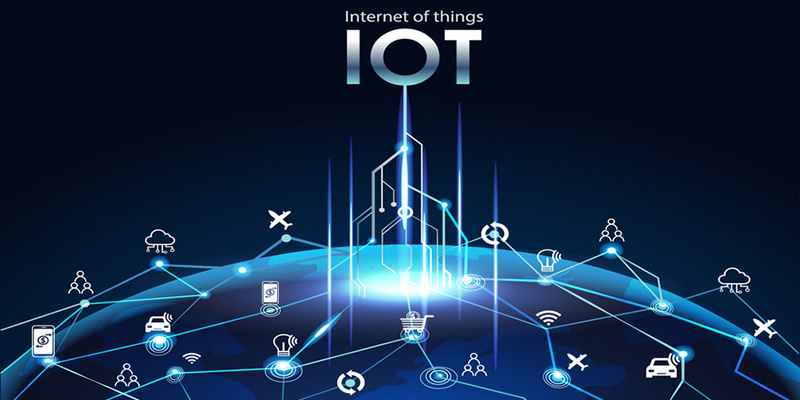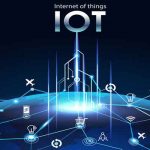IoT and The Year Ahead: Industry Predictions for 2022

This is a guest post by Knud Kegel, VP Product at EMnify, a Berlin, Germany-based startup that provides cloud building blocks for cellular communications in the IoT stack, connecting millions of IoT devices globally.
IoT continues to grab headlines and make its way to center stage. For those in the know, industrial IoT is already delivering a significant competitive advantage as our world becomes more connected. And as COVID-19 created a quantum leap for many businesses, accelerating their acceptance and adoption of new technologies, it also paved the way for an IoT future.
At EMnify, we expect to see a raft of transformative market developments as we move into 2022 and beyond. Whatever your strategic focus, the year ahead is filled with potential for business and IT leaders. So, read on for our top IoT predictions.
1. A new generation of IoT innovators
Operational cost savings, improved work safety, enhanced business opportunities, and better customer retention are all pushing IoT up the IT agenda. Yet as IoT becomes the driving force behind Industry 4.0, many first-generation players will begin to get left behind.
As the new year unfolds, we’ll see interest in cellular connectivity innovators begin to accelerate. Watch out for an influx of capital as investors begin to jostle for a piece of the IoT pie, pushing hard to accelerate innovation and growth within next-generation IoT connectivity providers.
2. There’s no joy without no-code
No-code software development is opening the doors to innovation, giving engineers the tools they need to accelerate change. There’s no requirement for programming knowledge, which is in short supply. No-code is served up in a visual drag-and-drop user interface, putting software development within reach of citizen developers.
This presents big opportunities within IoT applications. Traditional hand-coding is no longer necessary for connecting the various back-end systems, endpoints, security layers, and platforms. No-code isn’t just simple; it has become leaner, more effective, and more widely accepted as a robust and reliable alternative to hand-coding.
3. IoT moves up the IT stack
IoT is no longer just about data acquisition and sensor control. It’s moving up the value stack and is poised for deep integration within the heart of the corporate enterprise.
From delivering connectivity to providing a platform layer that collects and acts upon data, to providing value-add services and deeply integrated business-critical applications, we’re going to see more IoT companies rise to the top.
4. Remote SIM provisioning
We expect the digitization of SIMs in IoT deployments to take a large leap forward in 2022, allowing businesses to remotely activate the SIMs embedded in their endpoints. This simplifies and shortens the provisioning process while circumventing shipping fees and delivery bottlenecks. Roaming restrictions are bypassed and carrier profiles can be switched over the air too.
Compatible pluggable SIMs, as well as embedded SIM cards, can be combined with an embedded universal integrated circuit card (eUICC) and a remote SIM provisioning platform. This allows even global large-scale deployments to operate with a single SKU approach and switch profiles later if needed. Watch out for the rapid adoption of remote SIM provisioning in 2022 and beyond.
5. Security becomes Job Number One
Just as they deliver a slew of benefits to a wide range of industrial applications, IoT ecosystems can cause potentially irrevocable damage if breached. As a result, attention is increasingly shifting towards secure networking setups and stricter device policies.
When a security breach occurs within an IoT environment, not only can devices be misused, but cybercriminals can also sabotage data, trigger physical actions, and cause destruction within the real world. As IoT deployments become larger and more complex, a renewed emphasis on private networks and advanced security measures will drive implementation discussions.
6. The age of IoT via satellite
Satellite narrowband IoT is on track to plug the gap between terrestrial mobile connectivity services and non-cellular IoT networks. At present, much of the Earth’s surface isn’t covered by cellular networks, and this presents a huge opportunity for satellite IoT.
Potential applications include asset tracking, oil and gas industries, utilities, manufacturing, and construction. Although Swarm is a prominent player, there’s a growing number of companies getting involved. 2022 could be a watershed year, helping to create new sectors and nudging niche use cases towards the mainstream.
7. The metaverse
Businesses can now recreate anything from a single endpoint to an entire factory or ecosystem in digital form. Placing this digital representation into the metaverse, complete with live feeds, allows for everything from more accurate predictive maintenance, to maximizing productivity based on almost limitless scenarios. Even smart cities can be modeled successfully, accurately, and in real-time.
When IoT is combined with the metaverse, sensor data takes on a whole new dimension. The pieces are all beginning to fall into place, and the new reality is not too far away. That’s why it’s on my list of IoT predictions for 2022.

